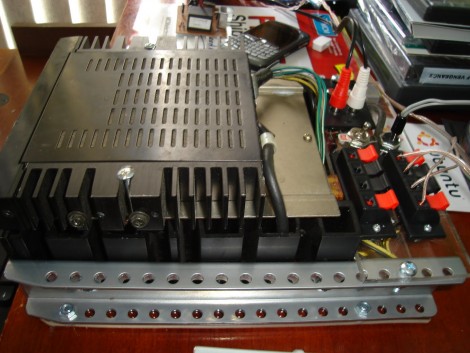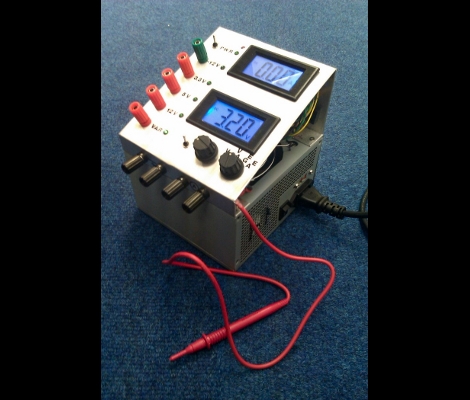Here’s a fancy way to convert an ATX powers supply into a bench supply. [TG] didn’t just cut off the motherboard connector and add banana plugs, but improved the functionality. Right off the bat you’ll notice that he’s added a control panel. There is an Ammeter and Ohmmeter to let you know what the unit is putting out. He added an MIC29152WT adjustable voltage regulator so that he’s not limited to the fixed voltages of the psu. As a final touch he added an external voltage probe which can be used with the flick of a switch. It’s no replacement for a proper bench supply, especially since it doesn’t have adjustable current limiting, but it’s a nice improvement upon previous psu hacks.
atx24 Articles
Making Mobile Audio Work At Home

[Nikita] made a great find while cleaning out his garage: a set of audio amplifiers from a 1986 Volvo. After a bit of testing, he dislodged a stuck relay and set out to use these amps for a home audio system. He grabbed some left over brackets from his TV mount and used them as rail mounts. On the back he wired standard speaker connectors and RCA connectors to the wiring harness for the amplifiers. The final aspect is powering up the device, for which he used his ATX psu previously modified as a bench supply. 130-Watts of power for the cost of a few connectors.
We surprise to find we haven’t covered this common ATX bench-supply conversion before. What we have seen is an adapter to use one as a bench supply.
Compaq Motherboard Power Mod

Some companies insist on using proprietary pieces. It can be really frustrating when there is no apparent reason other than consumer lock in. It irritates us to feel like we’re being forced to buy their pieces. This is one of the more popular reasons listed when you ask a hacker or modder what got them started. This project takes us through making a normal power supply work with the compaq proprietary 14 pin plug found in some smaller desktop PCs.
Aside from the plug itself being different, the motherboards require a 3.3v standby voltage. A normal power supply usually only has a 5v. Though there are even simpler ways of bypassing the issue, he chose to put an inline voltage regulator. Schematics are available on the site.
[via Hacked Gadgets]











